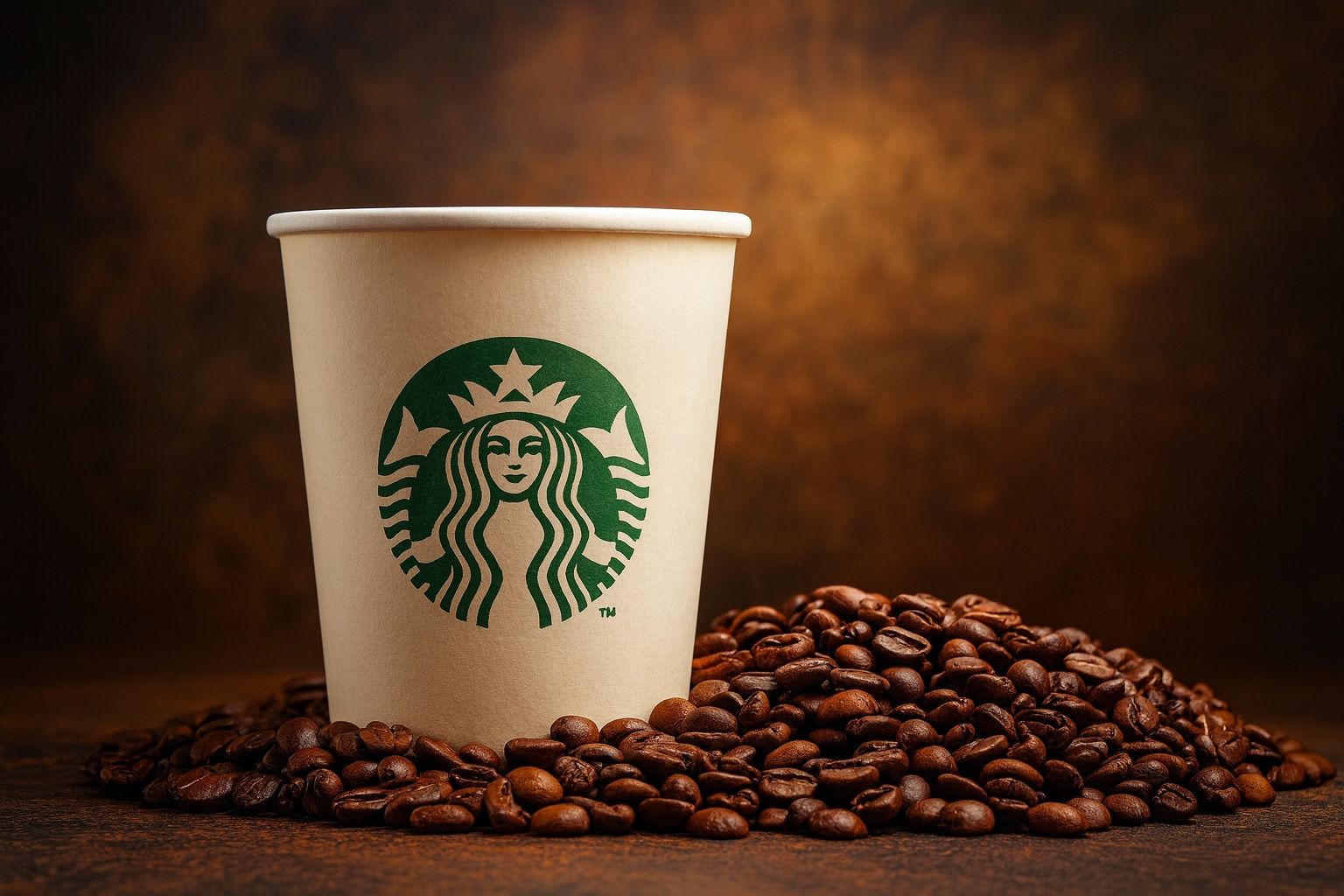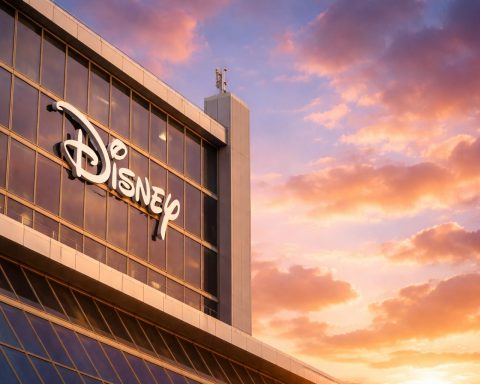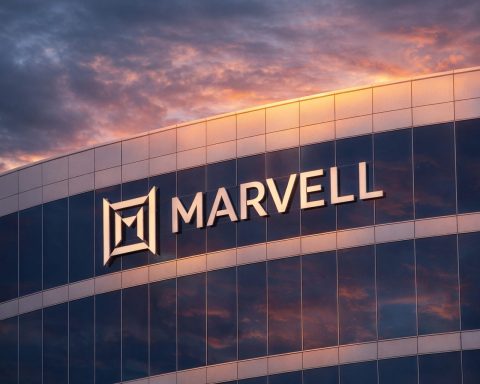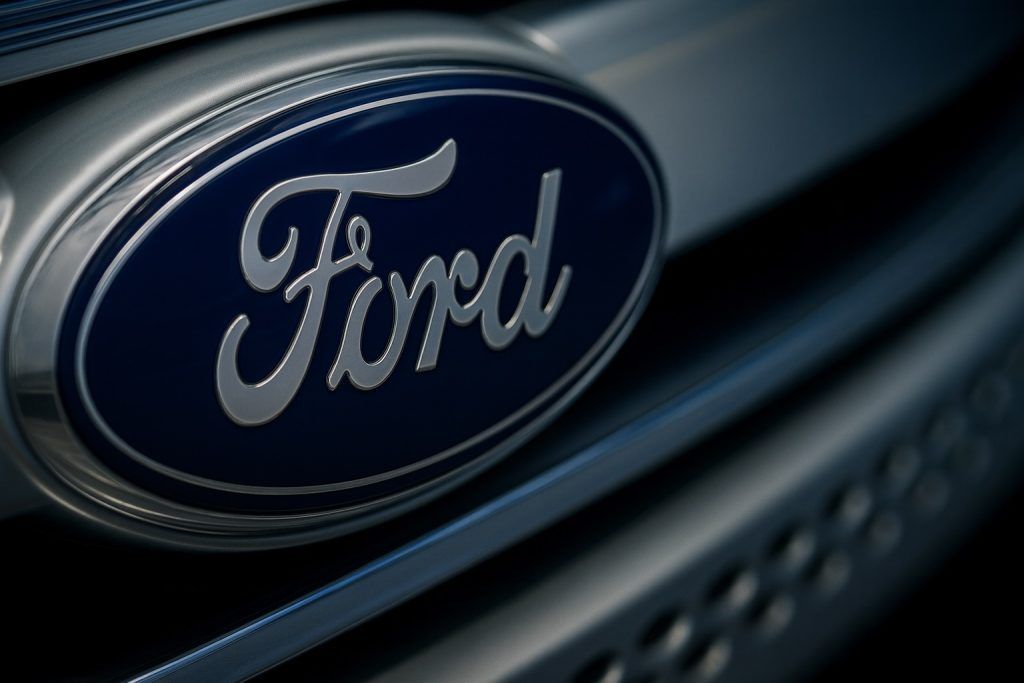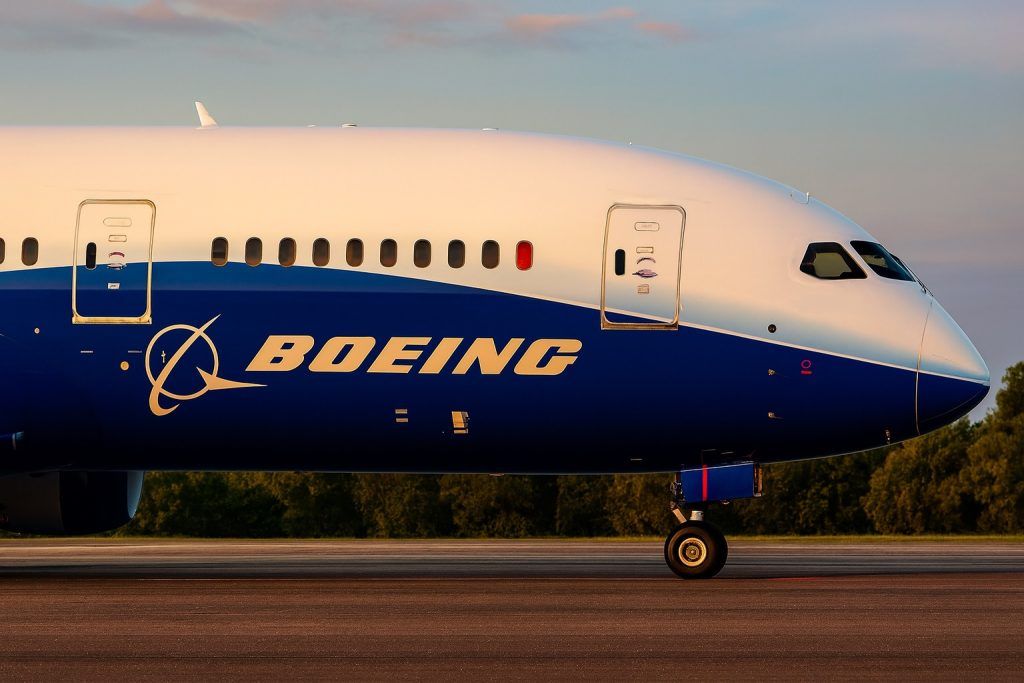Starbucks stock trades in the mid-$80s (Nasdaq: SBUX) after a recent bounce; it remains down about 9–10% over the past year [1] [2]. CEO Brian Niccol has launched a $1 billion “Back to Starbucks” turnaround – closing roughly 1% of U.S./Canada stores (several hundred locations) and cutting ~900 corporate jobs [3] [4]. Q3 FY2025 results (ended July) were weak: EPS $0.50 (missing consensus) and profit plunged ~47% YOY on higher costs [5] [6]. Wall Street is cautiously optimistic: ~⅔ of analysts rate SBUX a Buy, with an average 12‑month target around $100–105 (roughly 17–20% above current prices) [7] [8]. Labor tensions are mounting as unionized baristas rally over abrupt store closures [9], and major investors (including the NYC Comptroller) have urged Starbucks to restart stalled union negotiations [10] [11]. Globally, Starbucks is eyeing a partial sale of its China business (bids have valued the China unit at ~$5 billion) [12], even as it inks high-profile partnerships like the 2028 LA Olympics coffee sponsorship [13].
Stock Performance & Recent Price Action
Starbucks shares have edged upward in mid-October 2025 after months of stagnation. As of Oct. 17, 2025 the stock closed around $85.36, up about 8.8% in the past week [14]. Despite that rally, SBUX remains roughly 10% below its price a year ago [15] [16]. The stock is trading just below key technical levels – its 50-day moving average (~$85.7) and roughly near the 200-day line (~$87.5) [17]. This sideways drift reflects wider underperformance: over the last year SBUX has lagged the S&P 500, and its 52-week range spans roughly $75.50 to $117.46 [18] [19].
Broadly, Wall Street sees Starbucks as undervalued at current levels given the turnaround agenda. The trailing P/E is in the mid-30s (around 36–37× [20] [21]), and the stock yields about 2.8–2.9% (roughly $2.48/year dividend) [22] [23]. Analysts note that the price is pricing in significant operational drag: Simply Wall St’s DCF model even suggests SBUX is currently overvalued by ~66% based on cash flow estimates [24]. However, the consensus “Buy” rating and six-figure price targets (average ~$100 [25]) imply investors expect material improvement next year.
Niccol’s Turnaround Plan: Store Closures & Restructuring
In late September 2025, incoming CEO Brian Niccol (formerly of Chipotle) unveiled a sweeping restructuring dubbed “Back to Starbucks.” The initiative earmarks roughly $1 billion for changes this fiscal year [26]. Key moves include closing hundreds of underperforming outlets – about 1% of its U.S./Canada store base – and axing ~900 corporate jobs [27] [28]. Notably, the company shuttered high-profile Seattle stores (including the flagship Seattle Reserve Roastery and a Chicago store) as part of this cull [29] [30]. Niccol said closures target locations that “could not deliver the physical environment our customers and partners expect” and lacked a clear performance path [31].
Meanwhile, Starbucks is pouring investments into the remaining stores. Niccol’s plan calls for renovating over 1,000 stores by 2026 with “warmer” designs and lower build costs [32]. He also emphasizes faster service and a richer in-store experience: the company is simplifying its menu (cutting ~30% of items) and rolling out new beverage innovations (e.g. protein-infused cold foam, new roasts) [33]. Digital upgrades – from AI-driven inventory systems to a revamped mobile app – aim to trim order times under four minutes [34]. An internal “Green Apron” service model is being piloted, adding baristas at peak hours and personal touches (handwritten cup notes) to boost loyalty [35]. These initiatives have raised costs – Starbucks has already booked over $100 million in one-time restructuring charges [36] – but management believes they will unlock more consistent traffic over time.
Analysts have reacted positively to the revamp. Morgan Stanley commented that “the company is planning to be on offense next year once its new operating model is in place” [37]. J.P. Morgan went further, saying Niccol’s goal has shifted from a mere “Back to Starbucks” recovery to an ambitious “Better Starbucks” vision [38]. BTIG’s Peter Saleh echoed the cautious optimism: “the turnaround has taken longer than we expected…but efforts are coalescing and progress is being made. We think once these start working, the impact will be significant and pretty immediate” [39]. In short, analysts see Niccol’s aggressive moves as the last best effort to revive growth at a company that has struggled with slow traffic and high costs.
Quarterly Results: Revenue Up, Profit Down
Starbucks’ latest quarterly report (fiscal Q3 2025, reported July 29) underlines the company’s mixed results. Earnings came in at $0.50 per share, well below Wall Street’s ~$0.64 estimate, due to higher wages and restructuring costs [40] [41]. Net income tumbled ~47% year-on-year. Revenue was $9.46 billion (+3.8% YoY) [42] [43], modestly above forecasts, but same-store sales in the U.S. fell ~2% for the sixth consecutive quarter [44]. Margins were squeezed: Starbucks’ net margin was only about 7.2%, and return on equity swung deeply negative as profits collapsed [45].
Management attributed the profit shortfall to increased labor and supply costs, as well as one-time charges (including the transition to Niccol’s system) [46]. They noted that U.S. consumers have become more price-sensitive – indeed, survey data and sales trends suggest some customers are shifting to lower-priced competitors. On the earnings call, Niccol emphasized the silver linings: international revenue growth is strong and comp sales in China finally turned positive in the latest quarter (about +2%) [47] [48]. But the near-term takeaway was clear: Starbucks needs the turnaround plan to stem these continuing sales declines.
Labor Unrest and Union Negotiations
A major storyline for Starbucks this year has been labor relations. Over the past months Starbucks baristas have staged protests over the sudden store closures. In early October, union members and supporters rallied outside Starbucks’ Seattle HQ to decry the overnight shutdown of iconic cafes [49]. Workers said they often learned of closures via social media rather than company notice, and complained that staff were not offered transfers as in past reshuffles [50]. Such actions underscore the brewing tension: the company has closed at least two unionized cafes (Seattle and Chicago Ridge) as it prunes stores [51] [52].
Investors are also pressing the company on labor issues. In mid-October, New York City Comptroller Brad Lander and several major asset managers wrote to Starbucks’ board urging them to restart contract talks with Workers United, the union representing over 12,000 U.S. baristas [53]. The letter warned that Starbucks’ labor relations “have significantly deteriorated,” citing hundreds of new unfair labor practice (ULP) complaints, store pickets and even strikes in recent months [54]. The signatories (which include NYC pension funds, Trillium Asset Management, and others) noted that the number of unionized Starbucks cafes has jumped to 650+ in the U.S. (from about 525 a year ago) [55]. They are essentially demanding that Starbucks reach a formal contract, especially as CEO Niccol professes support for partner (employee) success.
Starbucks has tried to quell tensions publicly. The company insists that union status did not influence which stores were closed, and in corporate communications emphasized its willingness to negotiate. A Starbucks spokesperson noted that the company has already held “more than 30” bargaining sessions with the union and remains “ready to return to the table” to reach agreements [56] [57]. Niccol’s Sept. 25 memo to staff framed the closures as a painful but necessary step in fixing operational issues [58]. Still, union leaders have vowed to keep pushing for national contracts and better pay. In the near term, labor unrest adds uncertainty to Starbucks’ turnaround: further pickets or work stoppages could weigh on results, while resolution could unlock smoother implementation of Niccol’s plan.
Global Strategy: China JV and Brand Push
Starbucks’ growth outlook also hinges on international markets, especially China. In September, reports surfaced that Starbucks had solicited bids valuing a portion of its China business at roughly $5 billion [59] – about 10× 2025 EBITDA. (For comparison, Chinese rival Luckin Coffee trades around 9–10× EBITDA.) The move is seen as a way to capture some value from a market where Starbucks’ share has been eroding (from 34% in 2019 to ~14% today [60]) amid rising competition. Niccol has said Starbucks will retain a “meaningful stake” in China and is not considering a full exit [61]. The company is also leaning into China with targeted promotions: it recently cut prices on some beverages and rolled out China-specific products to win back customers. Early results show improvement (comp sales in China turned positive in Q3 for the third straight quarter) [62].
Beyond China, Starbucks continues to bolster its global brand presence. For example, in October it announced a marquee partnership as the Official Coffee Partner of the 2028 Los Angeles Olympic and Paralympic Games [63]. Loyalty and technology investments also target global growth: Starbucks now has roughly 34 million active loyalty members worldwide, and digital innovations (mobile ordering, AI inventory, store layout experiments) are being used in markets from North America to Asia. These moves diversify Starbucks’ revenue and may cushion U.S. headwinds, but they also take time and money to yield returns.
Competition & Market Context
Starbucks still dominates the premium coffee space – it operates roughly 38,000 stores globally, far more than any rival [64]. In North America alone, Starbucks has about 70% more outlets than its nearest broad competitor, Dunkin’ [65]. However, it faces intense competition on price and format. McDonald’s McCafé chain, Dunkin’ (with ~14,000 global shops), and value-oriented chains have all expanded aggressively [66]. Even newer players like Dutch Bros (now 1,000+ U.S. drive-thrus) are siphoning customers looking for cheaper or more convenient coffee [67]. At a time of high inflation, many consumers have become more value-conscious. This fierce competitive backdrop has contributed to Starbucks’ flattening traffic – even as it raises prices, some customers trade down.
In the stock market, broader sector trends matter too. In 2025 investors have rotated toward value and defensive names, partly on interest rate uncertainty. Starbucks (a consumer discretionary staple with relatively high valuation) has therefore lagged the S&P 500’s rally [68]. For now, SBUX’s performance reflects a tug-of-war between bullish faith in Niccol’s turnaround and bearish concerns about spending pressures and labor costs.
Analyst Commentary & Price Targets
Wall Street’s view on SBUX is cautiously positive. As noted, the consensus rating is about a “Moderate Buy.” According to one tracker, 14 analysts rate it a Buy, 10 Hold and just 2 Sell [69]. The average price target across ~24–27 analysts is roughly $100–105 [70] [71], implying 17–20% upside from current levels. Targets vary: the high side includes calls in the $110–115 range [72], while more bearish views dip into the $70s.
Recent analyst commentary highlights the long-term potential once turnaround measures take hold. Morgan Stanley and J.P. Morgan have emphasized the new CEO’s “offensive” strategy and optimistic trajectory [73]. In late October, Wells Fargo reiterated an Overweight rating on SBUX, with analyst Zach Fadem backing a $100 target [74] [75]. By contrast, Citi’s analysts trimmed their view, maintaining a Hold on the stock and cutting their target to $84 [76]. TD Cowen recently stuck with a $95 target. Overall, most blue-chip brokers foresee earnings bottoming out in FY2025 and rebounding in FY2026. For example, analysts’ forecasts (per StockAnalysis) show Starbucks’ fiscal 2026 EPS growing ~21–23% to about $2.73 (from ~$2.24 in FY2025) [77] [78]. Revenue is expected to rise to ~$39.9B (about +5.6%) next year [79], as store traffic recovers.
Forecast & Outlook
In sum, Starbucks’ stock outlook hinges on execution of its recovery plan and the broader consumer climate. If Niccol’s initiatives indeed restore traffic and tame costs, analysts expect a significant inflection. SBUX could then re-rate toward its peers (its current P/E is above the consumer staples average) and justify its price targets [80] [81]. Even so, risks remain: a continued decline in same-store sales, a protracted labor standoff, or a downturn in China could delay any rebound.
“Once these [turnaround efforts] start working, the impact will be significant,” notes BTIG’s Peter Saleh [82]. For now, Starbucks remains a bet on a turnaround story. The stock has stabilized near multi-month lows (in the high-$70s to mid-$80s) and pays a solid dividend (about 2.8–2.9% yield [83] [84]). Investors should watch upcoming catalysts – including any new earnings guidance, progress on union talks, and developments in China. If Starbucks can navigate these challenges, analysts say the company’s iconic brand and global footprint could support a 20%+ rally toward consensus targets by 2026 [85] [86].
Sources: Recent data and analysis from Reuters, TechStock² (TS2.tech), MarketBeat, StockAnalysis, Axios, Simply Wall St, and other financial news outlets [87] [88] [89] [90] [91] [92] [93] [94]. Each report covers the latest SEC filings, earnings releases, and expert commentary on SBUX.
References
1. ts2.tech, 2. simplywall.st, 3. ts2.tech, 4. www.reuters.com, 5. ts2.tech, 6. www.marketbeat.com, 7. ts2.tech, 8. stockanalysis.com, 9. www.axios.com, 10. www.reuters.com, 11. www.reuters.com, 12. www.reuters.com, 13. ts2.tech, 14. simplywall.st, 15. ts2.tech, 16. simplywall.st, 17. www.marketbeat.com, 18. ts2.tech, 19. www.marketbeat.com, 20. simplywall.st, 21. www.marketbeat.com, 22. ts2.tech, 23. www.marketbeat.com, 24. simplywall.st, 25. stockanalysis.com, 26. ts2.tech, 27. ts2.tech, 28. www.reuters.com, 29. www.reuters.com, 30. www.axios.com, 31. www.reuters.com, 32. ts2.tech, 33. ts2.tech, 34. ts2.tech, 35. ts2.tech, 36. ts2.tech, 37. www.reuters.com, 38. www.reuters.com, 39. www.reuters.com, 40. ts2.tech, 41. www.marketbeat.com, 42. ts2.tech, 43. www.marketbeat.com, 44. ts2.tech, 45. www.marketbeat.com, 46. ts2.tech, 47. www.reuters.com, 48. www.reuters.com, 49. www.axios.com, 50. www.axios.com, 51. www.reuters.com, 52. www.axios.com, 53. www.reuters.com, 54. www.reuters.com, 55. www.reuters.com, 56. www.axios.com, 57. www.reuters.com, 58. www.reuters.com, 59. www.reuters.com, 60. www.reuters.com, 61. www.reuters.com, 62. www.reuters.com, 63. ts2.tech, 64. ts2.tech, 65. ts2.tech, 66. ts2.tech, 67. ts2.tech, 68. ts2.tech, 69. www.marketbeat.com, 70. ts2.tech, 71. stockanalysis.com, 72. ts2.tech, 73. www.reuters.com, 74. stockanalysis.com, 75. stockanalysis.com, 76. stockanalysis.com, 77. stockanalysis.com, 78. ts2.tech, 79. stockanalysis.com, 80. stockanalysis.com, 81. ts2.tech, 82. www.reuters.com, 83. ts2.tech, 84. www.marketbeat.com, 85. ts2.tech, 86. stockanalysis.com, 87. ts2.tech, 88. www.reuters.com, 89. www.marketbeat.com, 90. www.reuters.com, 91. www.reuters.com, 92. www.reuters.com, 93. stockanalysis.com, 94. www.axios.com
